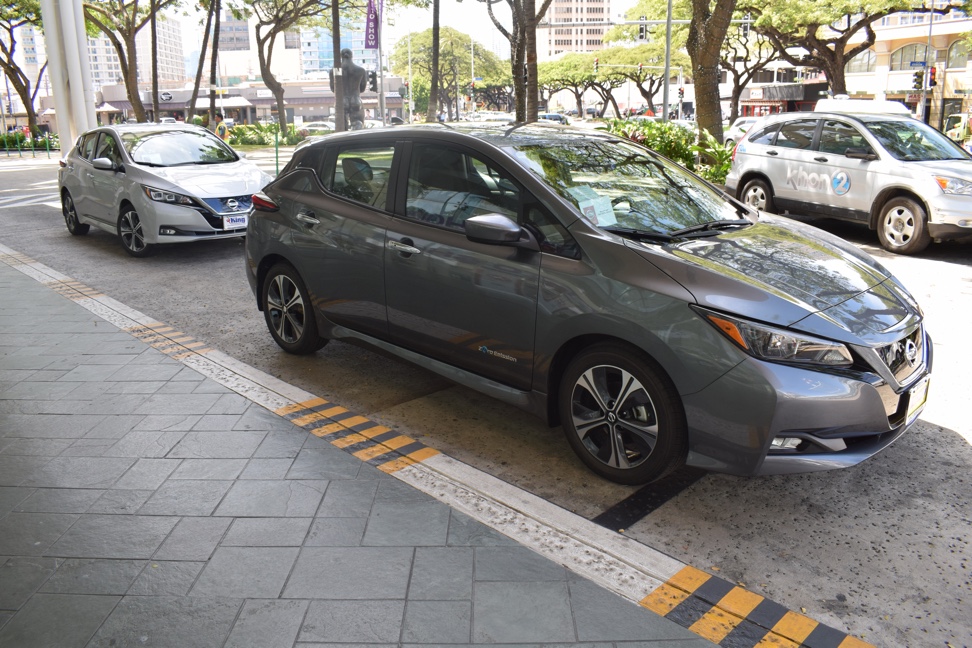
Home - AFV Events - Auto Shows - 2018 Honolulu Auto Show
California, with a large market and strong environmental policies that support alternative-fueled vehicles (AFVs), is usually the first state to get new models of such vehicles. Sometimes it is the only one or one of just a few, the others also being large states with supportive policies. Hawaii is a much smaller market, but a very enthusiastic one: in 2016 the state was second only to California in per capita plug-in vehicle registrations. Thus there are usually several AFVs on display at the First Hawaiian International Auto Show, sponsored by First Hawaiian Bank; I attended the first day of this year's show, held at the Honolulu Convention Center April 13-15, 2018.

Before I even got inside the Convention Center I saw something new: the first 2018 Nissan LEAF I had seen "in the wild" (that is, not at an auto show), out in the parking garage. Outside the lobby were (at least) two more available for test drives, shown here. The Nissan folks present said that the new model had only begun to arrive in Hawaii a couple of weeks before. The original LEAF already has huge "mindshare" here, like the Prius in the early days of hybrids, and all indications are that the new version is doing well wherever it enters new markets. My family has certainly been very pleased with our 2017 model!
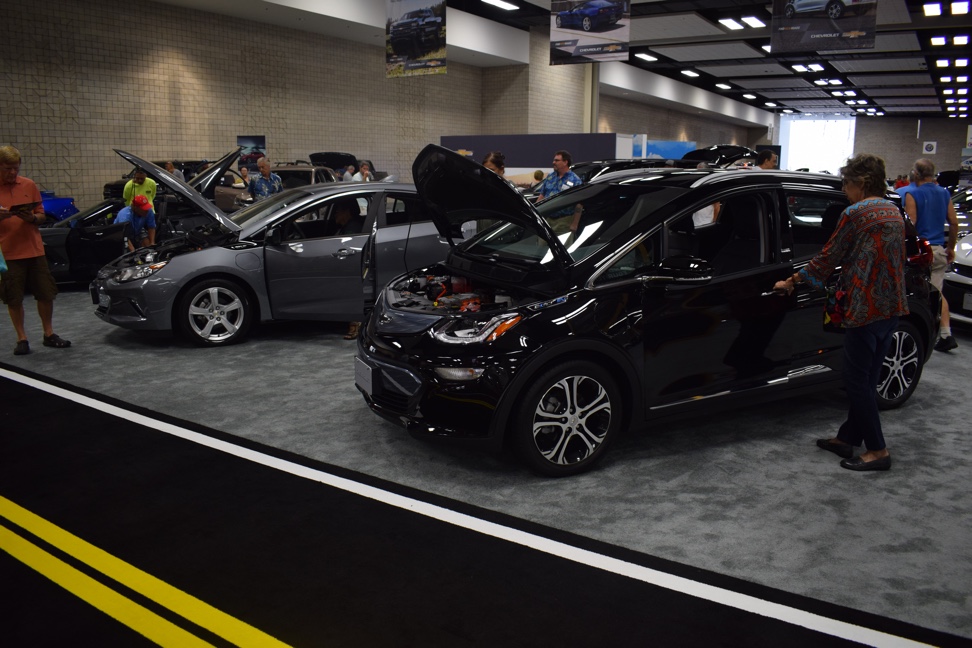
Though we do tend to get new plug-in vehicles later than California and other large AFV markets, most of the popular models make their way here in due course. I have begun seeing the battery-electric Chevrolet Bolt EV in the wild, and of course the plug-in hybrid electric vehicle (PHEV) Volt has been here for a long time, though we did miss out on the 2016 model.
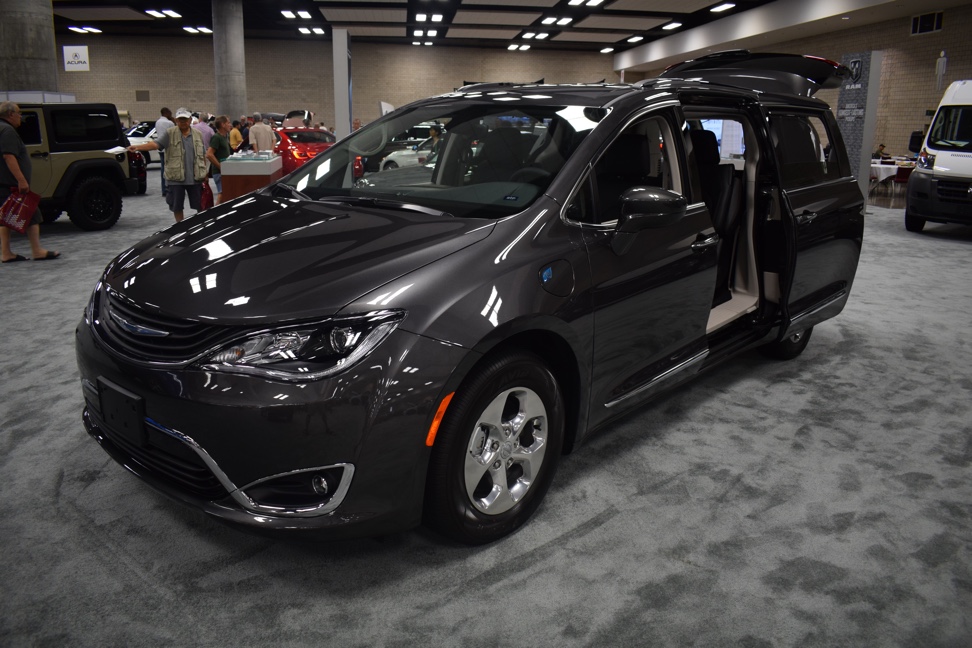
I couldn't honestly tell you how common this Chrysler Pacifica Hybrid (actually a PHEV) minivan is in Hawaii. Unlike the cars pictured above, this is not a dedicated plug-in platform, and the differences between the PHEV version and the ordinary gasoline versions are subtle, just a badge here and there and the charge-port cover in front of the driver's door. I'll have to take a closer look at any such vehicles that I see on the road!
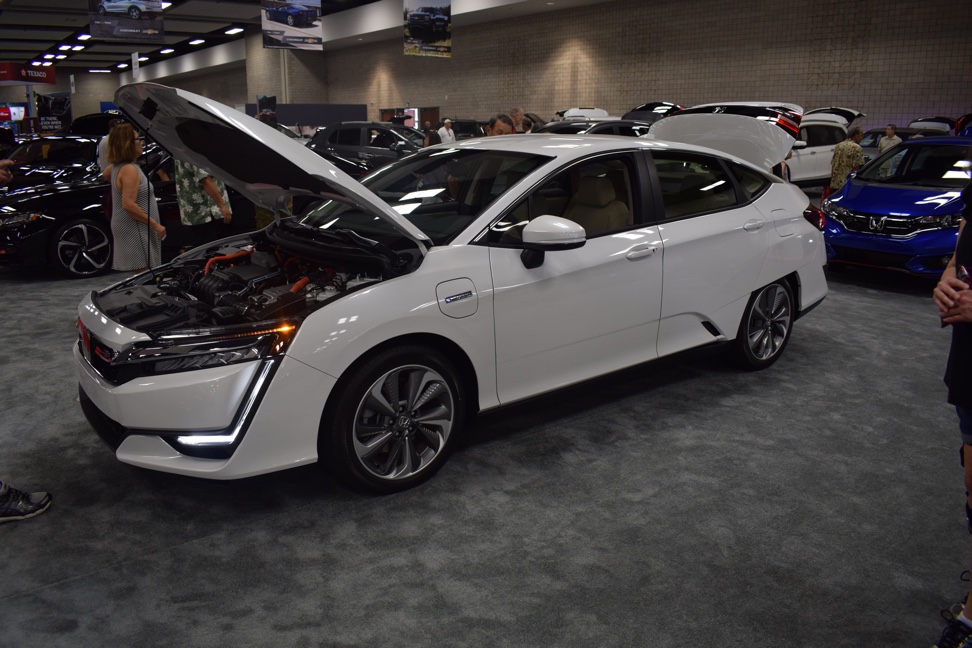
Then there are a few instances where there are multiple AFV versions of a vehicle, in which case states other than California may get some but not others. The Honda Clarity platform started out as a fuel-cell vehicle (FCV), but last year PHEV and battery-electric versions were also introduced. This is the PHEV, and the Honda folks told me that it is the only variant likely to make it to Hawaii in the near future. (A few weeks later I was in Los Angeles and saw the battery-electric model in the wild for the first time; also a Tesla Model 3. Oh well...) Note the skirts on the rear wheel wells; this reminded me of the original Insight hybrid! Or the GM EV1; on the earlier cars they were part of the drag reduction strategy, but I don't know if that's the point of these shorter skirts or if they're only there for style. (A new Insight is planned for this summer as a 2019 model, but I haven't heard if it is only going to be a non-plug-in hybrid like the current one or if other variants are in the works.)
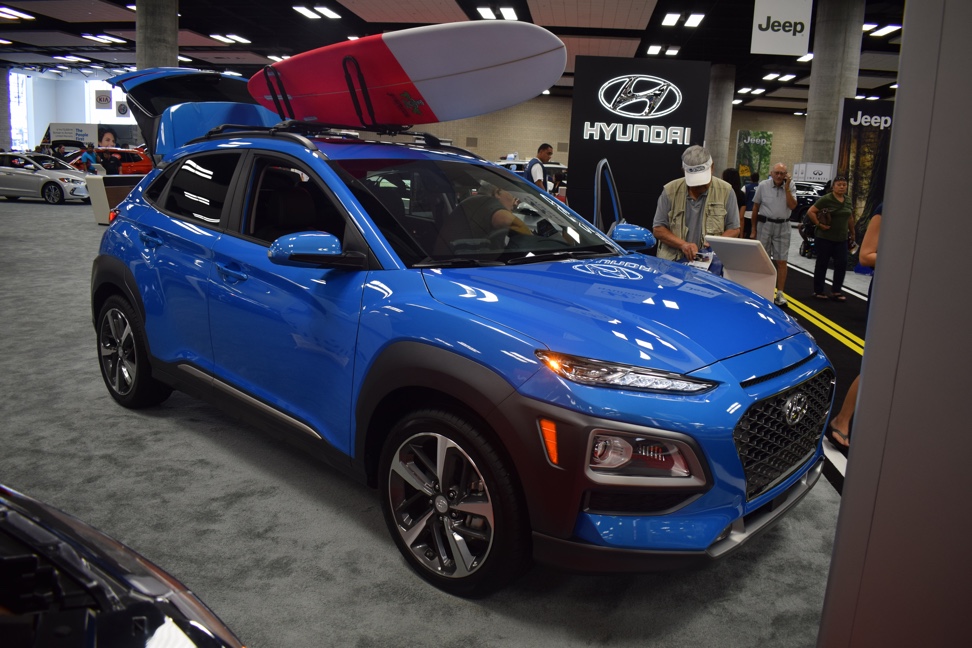
I had a very informative talk with Rachel, a product specialist for Hyundai, learning about their plans and giving her my point of view on the state of the Hawaii plug-in market. The Hyundai Ioniq line is one of the first dedicated AFV platforms with multiple variants, in this case a battery EV, a PHEV, and a non-plug-in hybrid. She told me that only the ordinary hybrid is likely to make it to Hawaii, but that the electric version of the new Kona CUV would probably go nationwide next year. The electric Kona was only introduced a few weeks earlier at the New York Auto Show, so the one pictured here is a gasoline model. There is also an upcoming PHEV version of the Kia Niro likely to be here soon, speaking of plug-in CUVs.
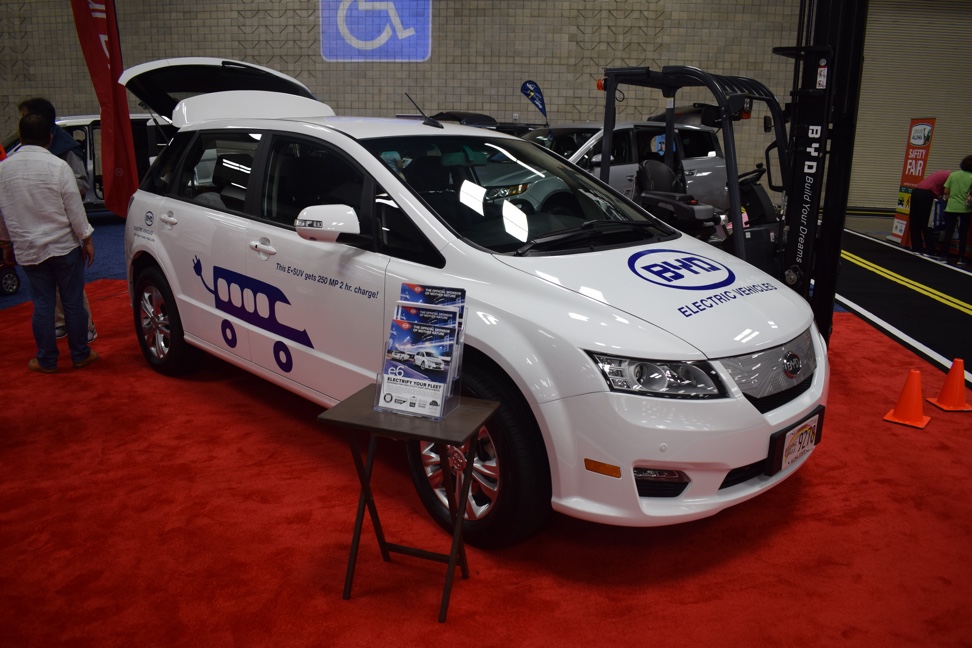
Here's an instance where Hawaii is ahead of California: I first saw this BYD e6 battery EV at last year's edition of this show. It is being imported by Soderholm Sales and Leasing, and I've never seen one in Los Angeles!
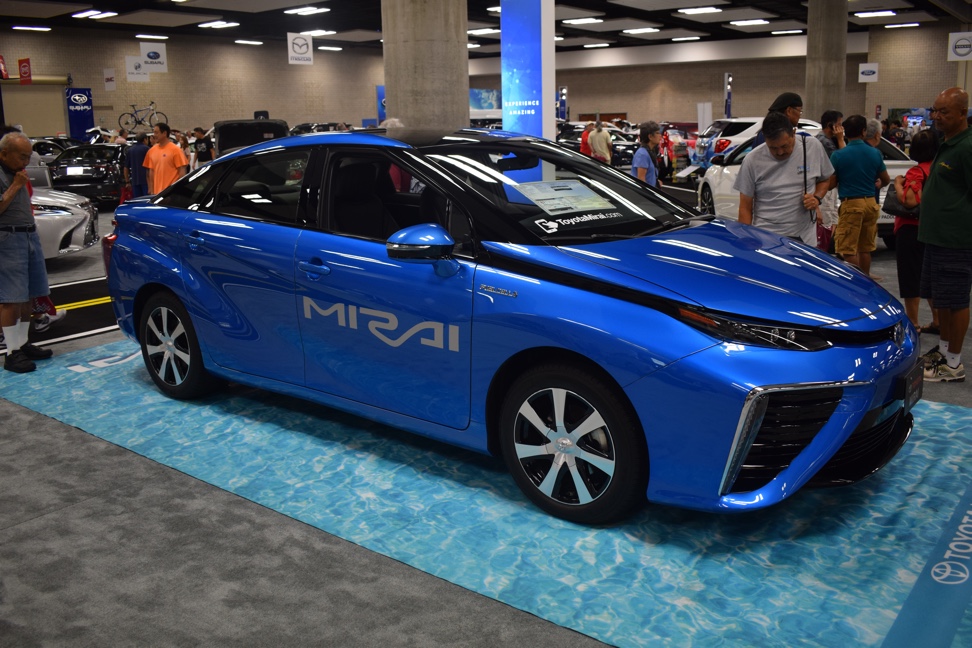
Finally, it was the 2017 model of the Toyota Mirai FCV on display at the most recent Los Angeles Auto Show, which means that this is the first 2018 model I've seen! Product specialist Maggie Clark, whom I first met at this show in 2016 and whom I've also run into at the Los Angeles show, was here again this year so I could ask her another round of questions. There have been a few Mirais on Oahu for a couple of years, fueling up at a hydrogen station on one of the military bases, but earlier this year ground was broken for a public station at the Servco Toyota dealership; it should be open this summer, at which point they will begin leasing the vehicles to customers (I don't think they'll sell them, unlike in California -- I'll have to ask about that when I get the chance). Thus this 2018 model is going to be staying on the island, not just here for the show and then back to the mainland!
Ms. Clark also cleared up something I'd been wondering about for awhile. I had heard that the Mirai had the ability to use its fuel cell to generate house-sized amounts of A/C electricity from its hydrogen supply, so as to replace a gasoline generator in the event of a power outage, but I had never seen this capability advertised in the U.S. She told me that the reason is that this capability is available in Japan, but that different wiring standards and codes would make it unsafe to implement here -- the risk of utility workers getting injured by touching a circuit that's live when it's not expected to be would be too great. As always, many thanks to Ms. Clark for giving me a new set of insights into Toyota's thinking!
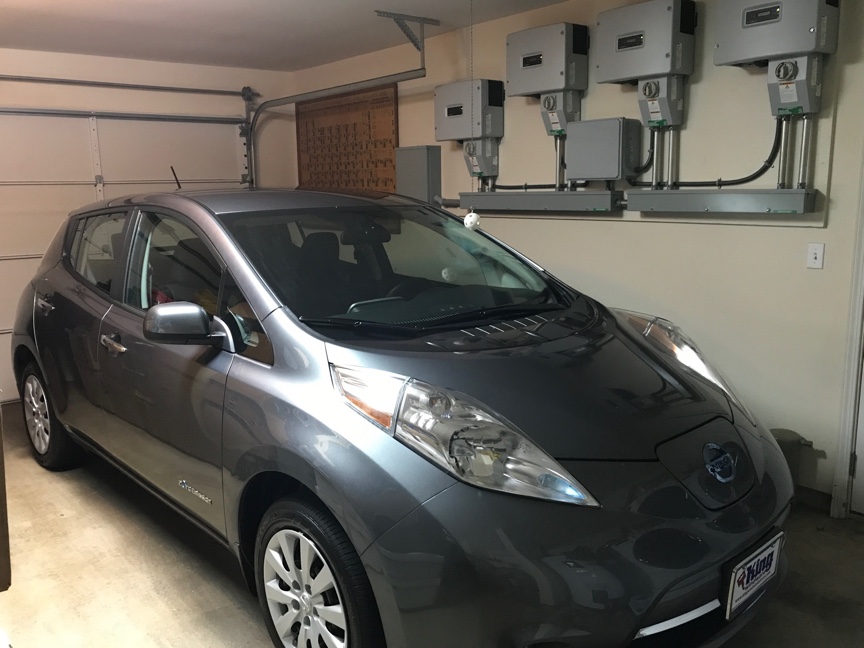
And speaking of questions about building codes, I also had a chance to talk with some representatives of Drive Electric Hawaii, a coalition of nonprofits, utilities, and government agencies dedicated to boosting plug-in vehicles in Hawaii. The state has set a goal of 100% renewable energy in only a few decades, and that means non-petroleum vehicles need to be viable not only for people with garages where they can charge up, like my family, but also for people living in condos and apartments. I wanted to know if they are counting on fuel-cell vehicles, which would be refueled in minutes at public stations like gasoline vehicles; or on increasing availability and speed of public charging stations, so that plug-in vehicles could recharge in minutes out on the road rather than in hours overnight at home; or on boosting the availability of charging in shared condo or apartment garages. I didn't really get a clear sense of what the endgame is, or if the people thinking about this are waiting to see how technology develops, but for now they are focusing on increasing the availability of overnight charging in shared garages. To this end, modifications to building codes are being proposed to require a certain number of charging stations, or at least the wiring to install them later, in new construction. This doesn't address charging for people living in existing apartments or condos, for which it would be quite expensive to retrofit the necessary wiring, or for those who have to park on streets; however, it is certainly a good next step, now that plug-in vehicles in private garages like mine are becoming downright common here. Good problem to have!
 Back
to AFV Events Page
Back
to AFV Events Page Back
to Fueling Station
Back
to Fueling Station Site
Map
Site
Map Contact
Me
Contact
Me All content copyright 1998-2024 by Mark Looper, except as noted. Reuse of my copyrighted material is authorized under Creative Commons Attribution 4.0 International license (CC BY 4.0).
![]()
![]()
new 2 May 2018